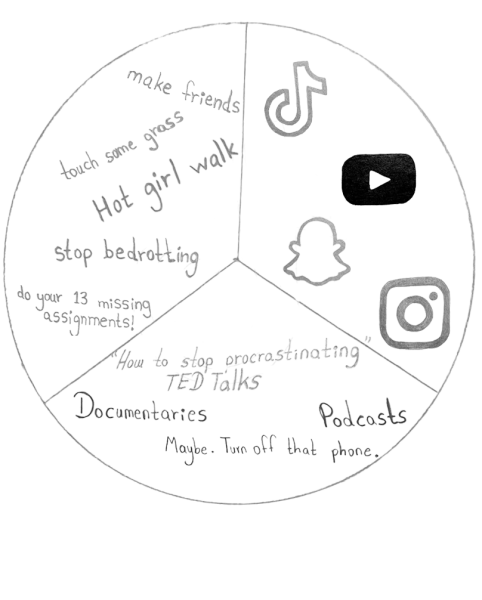Dye-versity in Running
The controversy behind the Color Run.

For many reluctant runners on the West Coast, The Color Run transforms exercising into enjoyment. But the Color Run is not the first to implement the idea of splattering colors on participants. A long-standing tradition know as the Holi Indian Festival, celebrated by Hindus annually in March, celebrates the colorful arrival of spring and the triumph of good over evil through festivities such as throwing powdered colors.
The vivid pigments symbolize the death of the Holika which is just one aspect of this religious holiday. While this has been part of traditional Hindu culture for many centuries, this practice of using colors has recently penetrated Western culture.
The Color Run is one way this symbolic occasion has been used. On their website, the Color Run states that it draws inspiration from “festivals throughout the world such as Holi”, yet some believe that this is not enough, accusing it of cultural appropriation.
Prashant Kakad, the director of Bollywood Dreams Entertainment, a production company, hosts Holi festivals in the Northwest to recreate the authentic Indian
experience. He believes that there are positive parts of the Color Run, and it should not be considered as detrimental as it has been labelled.
“What I do like about the run is that their mission is about creating a safe space for people to come and leave this world a happy, healthier place. I also see that they have donated about 5 million dollars since their inception to various charities,” said Kakad.
Furthermore, with its widespread influence over generations, Kakad hopes the Color Run could use their platform to educate people on Hindu culture.
“I do wish that they gave more credit and talked more about all these festivals so that people could learn about other cultures,” said Kakad.
Here at Garfield, students feel the
same way. Senior Gayathri Ramasamy moved here from India last year, and celebrates Holi with her neighborhood. She feels strongly about her culture being given proper recognition.
“If you don’t promote Indian culture [in the Run], then the best thing to do is to at least tell people where you took [the color] from, so it doesn’t seem like it’s your idea. This is something we’ve been doing for a long time, and we don’t like that it’s used for commercial purposes without giving us credit,” said Ramasamy.
Avi Chung, a sophomore of Indian descent, agreed with Ramasamy, and uses a different lens to view the Color Run’s use of Indian culture.
“It’s being repurposed. People who do the color run don’t fully understand the culture that’s behind it.”
Chung says that there are steps the Color
Run can take to become more culturally
sensitive. “Instead of just having a Color Run, you could have people speak about what it is about, [and] have actual people who understand what they’re doing in charge of [organizing] it,” Chung said.
Similarly, Malini Williams, a sophomore, strongly advocates for the Color Run to promote greater awareness of the culture the Color Run is influenced by.
“I don’t think there would be any one person or one side of it who could decide if it’s cultural appropriation. It is cultural appropriation even if the side you’re taking culture from is fine with it,” Williams said.
More specifically, Williams wants those who do not see it as cultural appropriation to reconsider the context.
“I don’t think everyone completely understands what it is. I would say think about it from the viewpoint from if it was your culture. Would you be offended by it? Do they know what the significance is?”
Although these three Garfield students recognize the Color Run as appropriation of their Indian culture, they believe that it can improve its reputation. Ramasamy in particular acknowledges that the Holi festival includes more than just colors.
“Holi is not just [about] throwing colors at each other. It’s a time where you offer to God. It’s where family and other people get together. You [get to] know your neighbors better. The world is in a way that you don’t know your own neighbors but this gives [you]an opportunity to meet other people because unity is one of the major [elements] of our religion,” Ramasamy said.
Art by Briana Klackner





